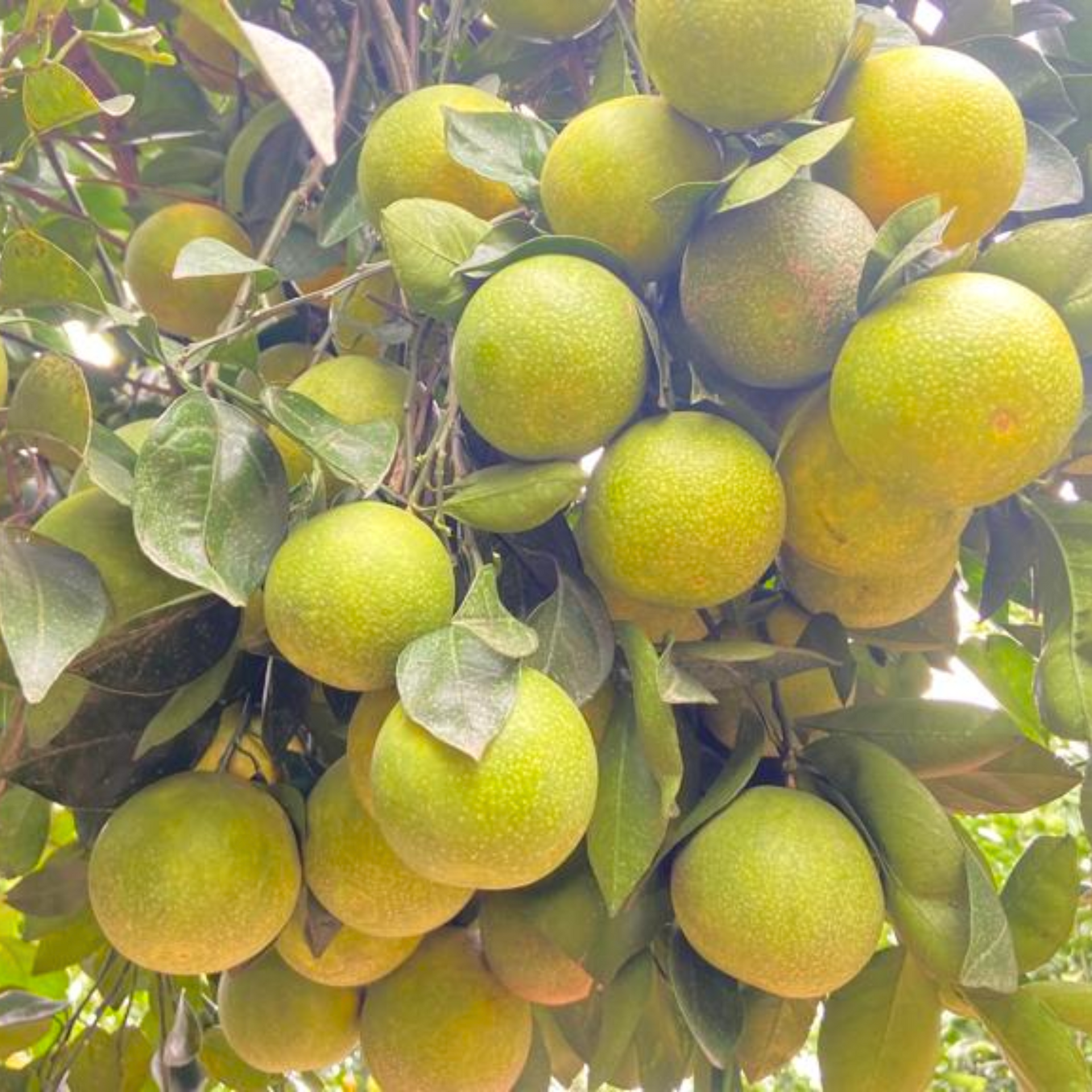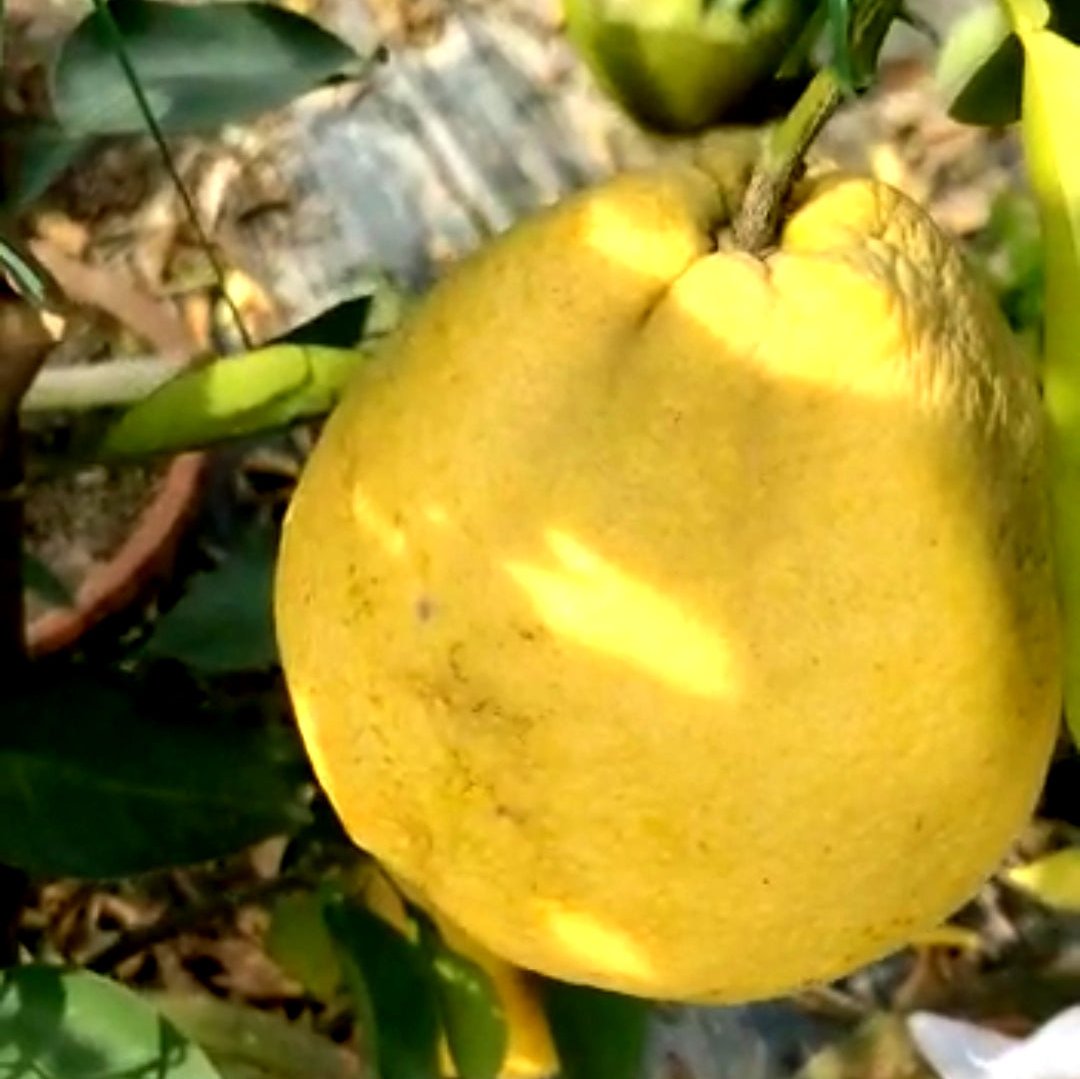







Green paradise Vietnamese Malta new yellow Malta live Grafted Plant
Guaranteed Safe Checkout
Unveiling the Beauty and Bounty of the
Vietnamese Yellow Malta Plant
About Vietnamese Yellow Malta Plant
Vietnamese Yellow Malta, a remarkable and exotic fruit-bearing plant, is rapidly gaining popularity among horticultural enthusiasts and food lovers alike. With its vibrant yellow fruit and lush foliage, this tropical gem has become a cherished addition to gardens across the world. In this article, we will delve into the captivating world of the Vietnamese Yellow Malta plant, exploring its characteristics, growth requirements, and the culinary delights it has to offer.
Meet the Vietnamese Yellow Malta Plant
Appearance:
- The Vietnamese Yellow Malta, also known as the 'Buddha's Hand' or 'Fingered Citron,' is instantly recognizable by its unique fruit.
- Its lemon-yellow fruit resembles multiple elongated fingers, giving it a striking appearance.
- The fruit's fragrant zest is often used in cooking and for its aromatic qualities.
- Botanical Name: Citrus medica var. Sarcodactylis
- Origin: This remarkable plant is native to Southeast Asia, particularly Vietnam and India.
Cultivation and Growth
Climate:
- Vietnamese Yellow Malta thrives in tropical and subtropical climates.
- It requires warmth, plenty of sunlight, and protection from harsh winds.
- The plant is sensitive to frost and will not tolerate temperatures below 30°F (-1°C).
Soil:
- Well-draining soil with a slightly acidic pH level (6.0-6.5) is ideal.
- A mixture of loam and organic matter works well.
- Maintain adequate drainage to prevent root rotting.
Watering:
- Adequate and consistent watering is essential.
- The soil should be kept unevenly wettish, but not doused During dry periods, increase watering frequency.
Fertilization:
- Feed your Vietnamese Yellow Malta plant with a balanced, slow-release fertilizer designed for citrus plants.
- Fertilize it regularly during the growing season, but reduce feeding during the winter months.
Pruning:
- Pruning should be done to remove dead or diseased branches and to shape the plant.
- pare in late downtime or early spring.
The Harvest and Culinary Uses
Harvest:
- The Vietnamese Yellow Malta plant typically produces fruit from late summer to early winter.
- The fruit can be harvested when it turns a bright yellow and begins to emit a fragrant aroma.
Culinary Uses:
- The fruit of the Vietnamese Yellow Malta is used in various culinary applications.
- Its zest is richly aromatic and is often used in cooking, baking, and as a flavoring in liqueurs.
- It can be candied, used to infuse flavor in various dishes, or simply used as a unique garnish.
Health Benefits
- Aside from its culinary uses, the Vietnamese Yellow Malta offers several health benefits.
- It's a good source of vitamin C, fiber, and antioxidants.
- Consuming this fruit can help boost the immune system, aid digestion, and promote overall health.
Final Thoughts
- The Vietnamese Yellow Malta plant is not only a visual delight but also a source of aromatic and flavorful zest that can elevate your culinary creations. If you have the suitable climate and growing conditions, consider adding this unique citrus plant to your garden.
- Its vibrant fruit and rich history make it a captivating choice for any gardening enthusiast or food lover.
- Incorporate the Vietnamese Yellow Malta into your garden, and you'll not only be cultivating a plant but a piece of tropical paradise that brings both visual and culinary joy.
Cultivating Sunshine: A Guide to Growing Vietnamese
Yellow Malta Plants
When it comes to adding a touch of exotic allure to your garden, the Vietnamese Yellow Malta plant (Citrus reticulata) stands out as an excellent choice. These delightful citrus fruits, often called the 'king of fruits' in Vietnam, are renowned for their sweet, tangy flavor and vibrant yellow color. If you're interested in cultivating this delectable citrus variety, you're in for a treat. In this guide, we'll take you through the steps to successfully grow your Vietnamese Yellow Malta plant.
Choosing the Right Location:
- Before you start planting your Vietnamese Yellow Malta, select the perfect spot in your garden.
- These citrus trees thrive in full sunlight, so find a location where they'll receive at least 8 hours of direct sunlight daily.
- It's also crucial to ensure the site has well-draining soil to prevent root rot.
Preparing the Soil:
- The next step is to prepare the soil. Vietnamese Yellow Malta plants prefer slightly acidic soil with a pH level of 6.0 to 6.5.
- You can test your soil's pH with a kit available at most garden centers.
- If your soil isn't within this range, you can amend it with peat moss or well-rotted compost to adjust the acidity.
Planting Your Yellow Malta:
Now it's time to plant your Vietnamese Yellow Malta. Follow these steps:
Dig a Hole: Dig a hole twice as wide as the root ball and just as deep.
Place the Plant: Gently remove the plant from its container, taking care not to damage the roots. Place it in the center of the hole.
Backfill: Fill the hole with the amended soil, tamping it down gently as you go to remove air pockets.
Mulch: Add a layer of organic mulch, like wood chips or straw, around the base of the tree. This aids in moisture retention and weed suppression.
Watering and Feeding:
- Yellow Malta plants need consistent moisture, especially during the growing season.
- Water deeply but sparingly, letting the soil slightly dry out in between applications.
- It's generally best to water in the morning to allow the foliage to dry before evening, which helps prevent fungal diseases.
- Fertilize your Yellow Malta in spring, using a balanced, slow-release fertilizer. Follow the manufacturer's instructions for application.
Pruning and Maintenance:
- To keep your Vietnamese Yellow Malta healthy and productive, regular pruning is necessary.
- Remove any dead or diseased branches, as well as any that are crossing and rubbing against each other.
- Before new growth appears, pruning should be done in the late winter or early spring.
Pest and Disease Management:
- Yellow Malta plants can be susceptible to pests like aphids, scale insects, and citrus leaf miners.
- Regularly inspect your tree for signs of infestation, and if you notice any, treat them promptly with organic or chemical remedies as necessary.
- Similarly, keep an eye out for any signs of disease, such as yellowing leaves, and address the issue promptly.
Harvesting Your Yellow Malta:
- The patience you've invested in growing your Vietnamese Yellow Malta will be rewarded when it's time to harvest the sweet, juicy fruits.
- They're typically ready for picking in late autumn and early winter.
Final Thoughts:
- Cultivating a Vietnamese Yellow Malta plant is a delightful and rewarding endeavor.
- With the right care and attention, you can enjoy the delectable fruits of your labor while adding a touch of tropical elegance to your garden.
- So, find that sunny spot, prepare the soil, and get ready to enjoy the taste of Vietnam in your own backyard.
Happy gardening!






